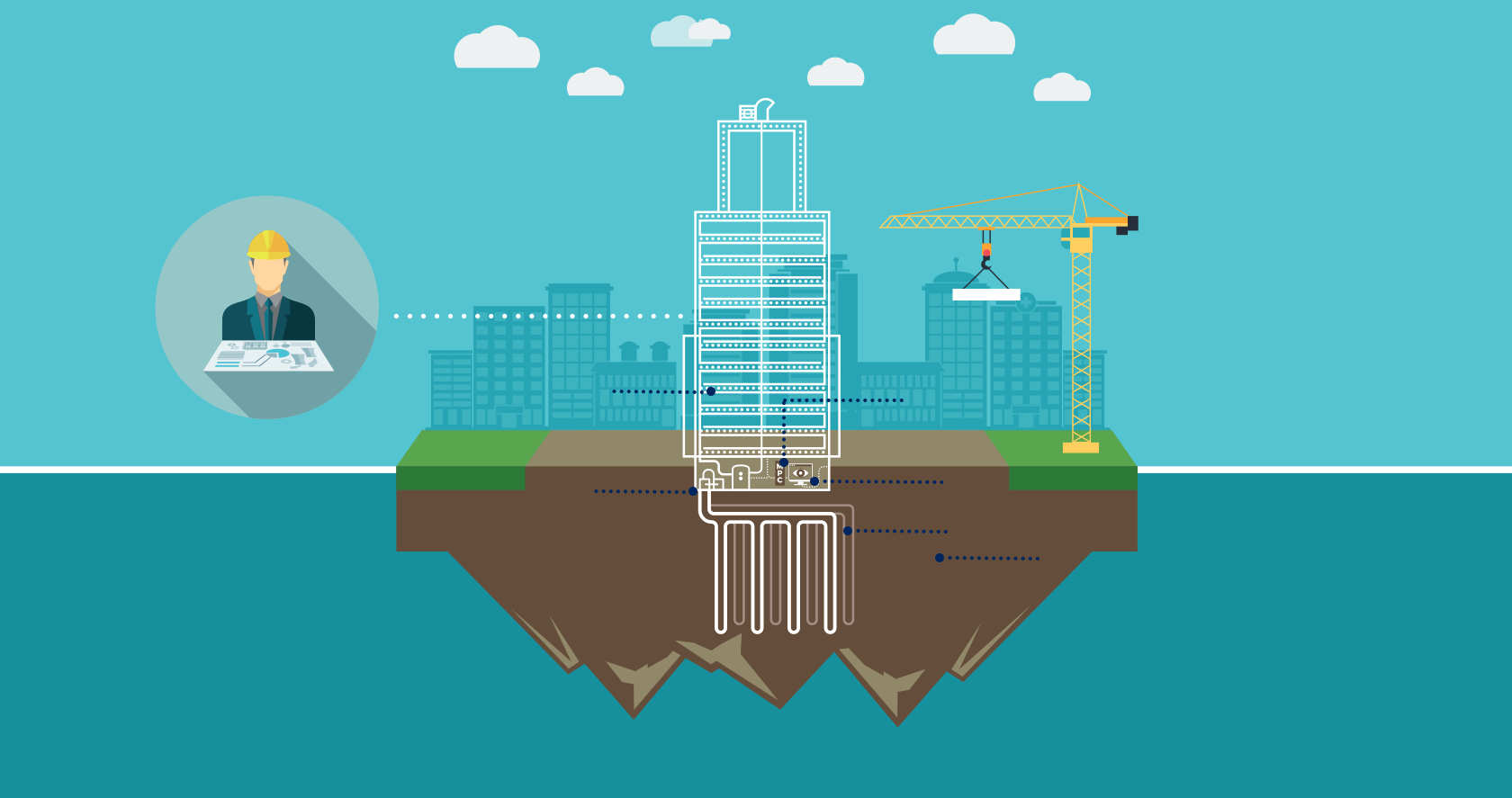Technology



GROUND TEMPERATURES
underground temperatures are usually more constant than temperatures above ground (e.g. in Northern Europe temperatures at 15 metres underground are typically between 8°C and 11°C)
Find out more

Geothermal system
heat is transferred into or out of the ground via a fluid that circulates in an underground loop of pipes
Find out more

Heat pump
heat is transferred between the ground and the building (TABS) using the principle of a vapour-compression cycle to either heat up or cool down the building
Find out more

TABS (Thermal Active Building Systems)
heat is transferred from or to the rooms of the building via a fluid that circulates in a loop of pipes embedded in the floors, ceilings and/or walls
Find out more

MPC (Model Predictive Control)
to improve the overall efficiency of the hybrid GEOTABS system, an adaptive model predictive control strategy is used
Find out more

MONITORING AND BUILDING MANAGEMENT SYSTEM
monitoring of the energy flows and indoor climate allows to supervise, manage and investigate the actual operation of the building and systems
Find out moreIntroduction
GEOTABS, when optimised, are the “perfect marriage” of technology for heating and cooling buildings. “GEO” refers to geothermal heat pumps. “TABS” (thermally activated building systems) include technology like concrete core activation, i.e., pipes embedded in concrete floors through which warm/cold water is pumped to heat/cool a building’s thermal mass. Together, GEOTABS (‘Geothermally Activated Building Systems’) offer tremendous energy savings over conventional systems.
Components of the system
- Limitless, ubiquitous and free at the point of use, geothermal energy offers huge potential to meet heating needs in Europe. Generally, underground temperatures remain far more constant than those above ground (at depths of about 15 m the temperature is approximately equal to the mean annual air temperature, 8 - 11°C in the UK (BGS). This heat differential can be exploited in winter for heating, and in summer for cooling.
- A geothermal system consists of a loop of metal pipe buried underground, through which heating fluid is pumped. Heat from the ground is absorbed by the fluid and transferred, via a heat exchanger, to a heat pump, which is connected in turn to the heat supply of the building. The relatively low temperatures make it suitable for connection to fluid-filled coils in floors, walls or ceilings, which store and radiate heat for longer.
- Geothermal systems may also be used for cooling, where excess heat from the building is transferred to the ground – in effect, using the system in reverse.
- TABS: In larger multistorey buildings such as offices, apartment blocks and care homes, heat transfer pipes may be embedded in the concrete slabs which form the floor / ceiling structure, or wall panels. These TABS (Thermo-Active Building Systems) are an effective way to use the thermal storage capacity of pre-existing building materials and minimise resource consumption.
- Model Predictive Control (MPC) is a method to control a system based on ‘numerical optimization’. A model is developed and used to predict future control inputs and responses, and this is optimised as the system is used in real time. For MPC-GT, heating and cooling needs will be modelled for each test building and MPC will be used to improve the performance of the hybrid geothermal and TABS technologies.
